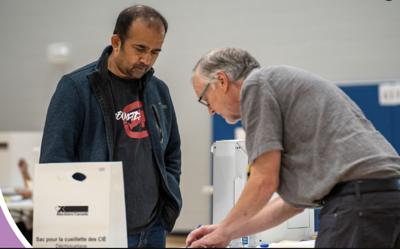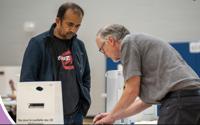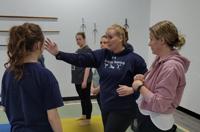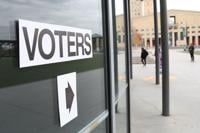Millions of Canadians have already voted in the federal election through , with an estimated two million people casting a ballot April 18 alone. But for those who remain undecided, time is running out, with just one week until election day on April 28.
In recent campaign announcements, the Liberals have promised to modernize health care while adding thousands of new doctors. The party has also pledged to invest $4 billion to help build new hospitals and health care infrastructure.
The federal Conservatives have pledged to cut the so-called âinflation taxâ by reining in government spending and cutting the annual budget for consultants by $10 billion. The Tories have also vowed to repeal âantidevelopment lawsâ and remove the cap on energy production, while also axing the industrial carbon tax.
Liberals lead in most polls
According to a CBC º¬Ğ߲ݴ«Ã½ , a Liberal lead in national polls has held firm following two federal leaders debates on April 16 and 17. But the advantage has slipped slightly from around six or seven points to about five points.
Polling suggests the Conservatives have been unable to shake the Liberalsâ overall advantage in Ontario, particularly in the Greater Toronto Area. The Bloc Québécois and New Democrats appear on track to suffer substantial seat losses, CBCâs poll tracker suggests, with the latter projected to fall short of the 12 seats needed for official party status.
CBCâs poll tracker puts the Liberals and leader Mark Carney in the lead with 43.2 per cent support, while Pierre Poilievreâs Conservatives are second with 38 per cent. The NDP and leader Jagmeet Singh are sitting at 8.3 per cent.
Hope for the Conservatives
Other research firms show a much closer race between the Liberals and Conservatives. But itâs important to consider how those vote totals relate to local races.
federal election dashboard shows the Conservatives with a slight lead in voter intention at 41.4 per cent, compared to the Liberals at 40.7 per cent. But the research firm projects the Liberals will win 172 seats, the minimum needed for a majority government in the 433-seat Parliament. The Conservatives would win 136 seats, according to the latest projection, to remain the Official Opposition.
The conducts polling using integrated voice response. Voters are reached through phone call â either to cell or land line â and are played a previously recorded message, which prompts them to press buttons corresponding to their vote preferences, demographics, and their answers to various survey questions.
Why the popular vote may not matter
The popular vote may not decide this yearâs election, according to Peter Graefe, associate professor of political science at McMaster University. In a recent interview with Metroland, Graefe noted the federal Conservatives earned more votes overall than the Liberals in the 2021 election, but failed to win enough seats east of Manitoba to win the election.
While the Tories piled up huge majorities in Western Canada, they lost by close margins in the Greater Toronto Area.
âThe Liberals are much more efficient because theyâre able to squeak out these wins around the GTA and suburbs of Vancouver,â Graefe noted.
The Liberals could form a majority or minority government in part by holding onto the GTA seats the party won by close margins in 2021, Graefe said.
Poll aggregator shows Liberal advantage
Poll aggregator  has a slightly more favourable outlook for the Liberals, with a seat projection of 184 as of April 21. The Conservatives sit at 126. The Bloc Bloc Québécois would win the third most seats, according the 338âs projection with 23, while the New Democratic Party would fall short of the 12 seats needed for official party status with nine seats.
Tightening race
An from April 14 shows the race tightening between the Liberals and Conservatives. The findings offer a glimmer of hope for Poilievre, the pollster said, although Liberal support remained statistically unchanged at 45 per cent.
âConcern over cost of living and inflation has been climbing since the start of the campaign, up to 56 per cent now, while worries about tariff threats and managing the Trump-Canada relationship has declined, off 12 points in the last month,â the pollster said.
Angus Reid has also found a noticeable shift among men back to the Conservative Party.
âIf the first weeks of the campaign were notable for the number of men willing to give the Liberals another look post-Trudeau departure, the second half may well be defined by the Conservativesâ attempts â which appear to be bearing fruit â to communicate directly to and woo back male voters,â Angus Reid noted.
Error! Sorry, there was an error processing your request.
There was a problem with the recaptcha. Please try again.
You may unsubscribe at any time. By signing up, you agree to our and . This site is protected by reCAPTCHA and the Google and apply.
Want more of the latest from us? Sign up for more at our newsletter page.




















To join the conversation set a first and last name in your user profile.
Sign in or register for free to join the Conversation